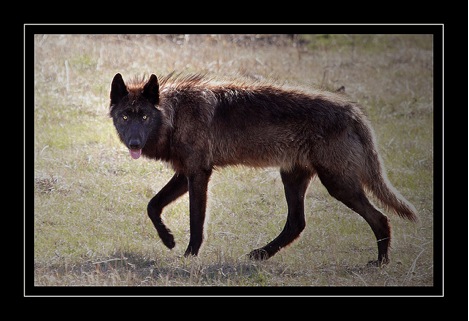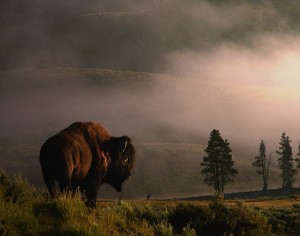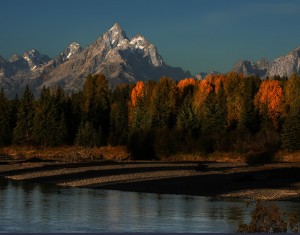Wildlife Photography Offers Beautiful Images and Teaching Opportunities
Posted: January 01, 1970
Many people are passionate about photography. They’re fascinated by the equipment, excited by the challenge, thrilled by the sight of beautiful compositions created with a lens, an understanding of light and a photographic eye. But the most successful photographers often have a second passion. They may find photography enthralling, but it’s the subjects they photograph that inspire them to pick up a camera and it’s the devotion to those subjects that motivate them to produce outstanding images — and to turn those images into photographic careers.
 Many people are passionate about photography. They’re fascinated by the equipment, excited by the challenge, thrilled by the sight of beautiful compositions created with a lens, an understanding of light and a photographic eye. But the most successful photographers often have a second passion. They may find photography enthralling, but it’s the subjects they photograph that inspire them to pick up a camera and it’s the devotion to those subjects that motivate them to produce outstanding images — and to turn those images into photographic careers. Photography: gainesp2003
Many people are passionate about photography. They’re fascinated by the equipment, excited by the challenge, thrilled by the sight of beautiful compositions created with a lens, an understanding of light and a photographic eye. But the most successful photographers often have a second passion. They may find photography enthralling, but it’s the subjects they photograph that inspire them to pick up a camera and it’s the devotion to those subjects that motivate them to produce outstanding images — and to turn those images into photographic careers. Photography: gainesp2003
Gary Melnysyn is a Connecticut-based photographer who has been shooting seriously for twelve years. His works have been shown in New England galleries, as well as in hospitals and universities. He’s a contributor to Nature Photographer’s Magazine, Outdoor Photographer Magazine and in 2008, one of his pictures was selected as an Editor’s Pick by National Geographic. He has also exhibited at the Old Faithful Visitor Center in Yellowstone National Park.
None of that should come as too great a surprise when you learn that in addition to being a photography enthusiast, Gary is also a Certified Wildlife Conservationist and an Interpretive Park Ranger who recently completed a five-month stint at Yellowstone. It was that love of nature and open spaces that led him to take up photography.
“I’ve always had a passion for the outdoors and wildlife in general,” Gary explains. “I decided that part of my spending time in the wilderness areas should include documenting my travels. I’ve tried to take it a step further over the years and develop it more into a fine art medium.”
Wildlife Photography as Art, Not Documentary

Photography: Gary Melnysyn
Gary’s images show waterfalls and lakes, mountains and geysers but it’s the animals that win most of his attention — birds and stallions, grazing buffalo and wild sheep all turn up in his portfolio. Any location that allows him to photograph bears though will be a favorite, says Gary, and he has a number of choice locations in Yellowstone. His most memorable photographs though, he says, are of the Druid Wolf Pack, a group of wolves that was introduced from Canada in 1996, became the subject of a number of nature movies, and is believed to have died out earlier this year.
Photographing in a place as beautiful as Yellowstone National Park, and shooting subjects as photogenic as bears and wolves, should make life relatively easy for any keen photographer, but Gary distinguishes between photographs that document his trips into the wilderness and images that might be regarded as works of art. The difference, he argues, lies in an understanding of light and composition — and a photographer’s eye.
“I always try to look at a scene as if I were going to break out my oil paints and begin creating the scene from my pallet,” says Gary. “Angles, lighting, what pleases the eye. This is the challenge. Anyone can pull the trigger and document where they’ve been. I believe it’s those that see what others might not that create images of art.”
But the art itself isn’t the only way that Gary is making use of his knowledge of nature and wildlife photography. When he’s not shooting, exhibiting or working as a park ranger, Gary teaches. He offers two kinds of classes. His workshops touch on equipment and camera settings, like any photographic workshop, but they focus in particular on the specific challenge of capturing appealing images of wild animals — a specialization that gives him a unique advantage. He also offers individual tutoring, a format which lessens the likelihood that students will feel intimidated by other learners and which allows him to personalize the lessons to suit the student’s needs. He also delivers lectures on wildlife photography, on the North American bear, and on how and where to photograph wildlife. All of those formats provide a way for Gary to continue to earn from his knowledge of both his subject and photography, even during periods when he’s not taking pictures.
Photography Teachers Needed with Experience and Special Knowledge

Photography: Gary Melnysyn
That may be a strategy that any photographer can follow provided they meet a certain set of conditions. For Gary, the first of those conditions is the time he’s spent in the wilderness photographing wild animals.
“I… can add value based upon my experience in the field,” he says. “I think that you must have that practical experience in the field before you can be a credible instructor.”
The second though is knowledge that can’t be acquired easily any other way. It’s only when you’ve picked up that information, and can teach something that can’t be learned from a book, that you’re ready to be a photography teacher, he warns.
Teaching and lecturing aren’t for everyone but they do provide some real benefits. Winning commissions and mounting exhibitions can be challenging and unreliable while teaching can provide a stable and reliable revenue stream. Workshops can be mounted during off-periods when access to your main subject is restricted, limiting your ability to shoot new pictures and build your portfolio. And seeing the enthusiasm in the eyes of a student as they understand how to shoot the pictures they’ve always wanted to create can go a long way towards reigniting a tiring sense of passion.
And there’s a big market, too. A photographer who knows how take great pictures can always find people willing to pay to acquire those skills. But as any flick through a photo-sharing site will show you, a lot of people have photography knowledge. A photography enthusiast looking to teach will have some tough competition then, especially if he or she doesn’t have the kind of field experience that enables Gary to fill classrooms and lecture halls. Combining general photography skills with the specific knowledge of how to shoot within a niche — whether that’s wildlife photography, car photography, children’s photography or anything else — will always deliver an advantage.
Photography is a passion in itself. But photography that only concerns itself with technique and with technical challenges can feel that it’s missing something. It’s when you use one passion to capture another that you really produce memorable images — and create exciting new opportunities.
Biz Tip Source: Photopreneur